Octavius: The Poor Man's Version
In principle, the 2D-ARRAY seven29 is designed for perpendicular beam incidence.
If oblique beam angles are used, the agreement between calculated and measured 2D-distributions depends on the dose calculation algorithm used by the TPS.
High sophisticated photon and electron algorithms (e.g., Anisotropic Analytical Algorithm, eMC, Collapsed Cone) give better agreement for oblique beam angles than pencil beam algorithms.
When the gantry is rotated even further, the beam enters the 2D-ARRAY seven29 from the side or the back. Now dose deviations may become significant, even if one of the "better" calculation algorithms is used. This can be a problem when the 2D-ARRAY seven29 is used for pre-treatment verification of RapidArc, VMAT or Tomotherapy. The same problem exists when IMRT plans are verified by copying the full set of fields to the phantom (using the original gantry angles of the plan).
PTW has recognized this problem and offers a solution for the 2D-ARRAY seven29, the OCTAVIUS phantom, designed by Ann Van Esch and Dominique P. Huyskens from 7Sigma, Belgium (Fig.1). The system consists of two similar objects: the LINAC phantom has an air cavity behind the ARRAY (not visible from outside) and is used for measurement, the CT phantom comes without the cavity and is used for dose planning. The air cavity in the LINAC phantom compensates for the ARRAY's reduced response if the beam enters the ARRAY from the back.
At KFJ, we usually perform IMRT pre-treatment verification on a field-by-field basis (either using Portal Dosimetry or the 2D-ARRAY seven29). If the patient recieves two abutting plans with asymmetric fields (e.g., a cranial head and neck IMRT plan plus a caudal static field to the supraclavicular region) and the task is to check the field abuttment, Portal Dosimetry cannot be used.
In such cases, dosimetric accuracy is not the primary goal: we are looking for potential hot or cold spots in the abutment region of the two plans. However, it would be nice if the reduced sensitivity for backside beams could be compensated at least approximately.
Materials and Methods
Purpose of this study is to evaluate a simple phantom (PMO - Poor Man's Octavius), which performs this approximate compensation and which only uses materials available in house (solid water, PMMA, cork).
Following the idea of the original PTW OCTAVIUS, the PMO linac phantom differs from the PMO CT phantom. While the 3cm PMMA plate on top of the ARRAY is identical in both setups, the PMO linac phantom (Fig.2) uses a 3cm slab of cork and 5.5cm of solid water (RW3) below the ARRAY, whereas the PMO CT phantom uses a solid 8.3cm block of PMMA (Fig.3).
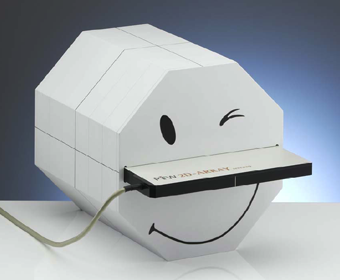 |
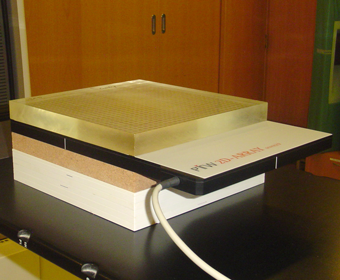 |
| Fig.1: The Original by PTW | Fig.2: Poor Man's Octavius by KFJ |
The treatment planning couch overlay on the CT scanner (a Somatom Sensation Open) is dosimetrically equivalent to the Exact couchtop on the Varian linac, and is included in the body outline in Eclipse. Therefore, dose calculations and measurements both take the couchtop's attenuation into account.
The spiral CT scan of the PMO CT phantom (the PMO CT linac is never scanned) was acquired with 120kV, 288mA, 1.5mm slice thickness. Images were reconstruced with the medium soft convolution kernel B40s.
Plan Preparation
For all treatment plans in Eclipse, the field isocenter was placed in the geometric center of the ARRAY's central ionization chamber (Fig.4, click to see all planes).
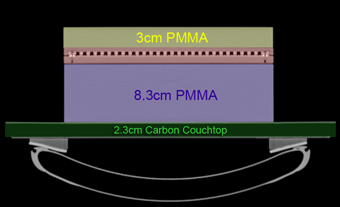 |
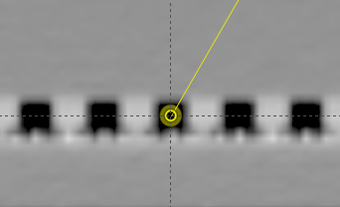 |
| Fig.3: PMO CT phantom | Fig.4: Isocenter placement |
For both photon energies (6MV and 15MV), a series of plans was created in Eclipse with a single 10x10cm field. Gantry angles were set from 0° (beam enters from the top) to 180° (beam enters through the couch) in 10° increments.
Dose distributions were calculated with the AAA algorithm 8.1.17 using 2mm grid and 200MU fixed. Figs.5 and 6 show two examples (click to display all planes).
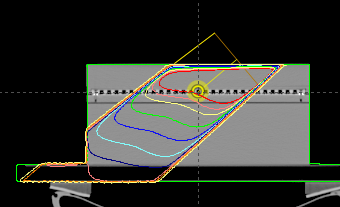 |
 |
| Fig.5 | Fig.6 |
The resulting dose planes through the isocenter of the PMO CT phantom were exported as 27x27cm, 512x512px absolute dose DICOM matrices.
Plans were delivered to the PMO linac phantom with dose rate 600MU/min. Dose distributions were measured with the 2D-ARRAY seven29 and evaluated on the spot with VeriSoft 3.2.
Measurement Results
Evaluation of the 0° measurement for each energy resulted in a correction factor, which was successively applied to the other gantry angles. The dose deviations therefore are relative to the 0° beam.
VeriSoft users may find it interesting to download the 6MV and 15MV VeriSoft-projects (which contain all measurements).
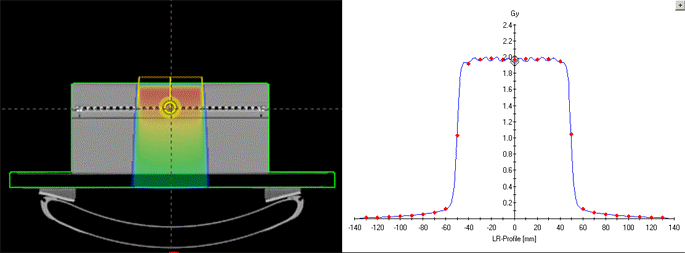 |
| Fig.7. Left: Dose distributions on PMO CT phantom. Right: Eclipse calculated
horizontal crossplane profiles through the chamber centers (lines), ARRAY measurement (dots). |
The agreement between calculation an measurement is good if the beam enters between 0° to 60° or 140° to 180°. Between 70° and 130°, agreement is suboptimal. Measured dose is sometimes higher, sometimes lower than calculated. Problems at these angles can be expected due to the simple geometry: if the beam enters in a very oblique angle from the back side, the fanlines in cork are much longer than the slab thickness of 3cm. This is of course solved with high sophistication in the original OCTAVIUS, where the bended air cavity means a constant thickness of the compensating volume for all beam angles.
Interestingly, for rotational therapies like RapidArc, the agreement is surprisingly good (Fig.8). This means that the compensation works on the average. The evaluation of a 360° ARC irradiation (10x10cm field, 200MU) shows a perfect match between the Eclipse crossplane dose profile and the ARRAY measurement:
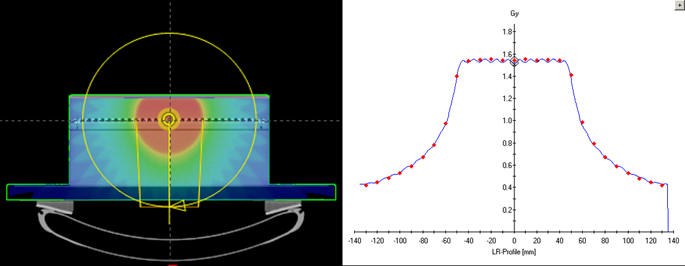 |
| Fig.8. Left: Calculated dose for 360° ARC treatment. Right: calculated crossplane profile (line) and ARRAY measurement (dots). |
The same is true for the higher photon energy.
Conclusion
The Poor Man's Octavius is a useful alternative to the original OCTAVIUS from PTW, if one is only interested in approximate sensitivity compensation.